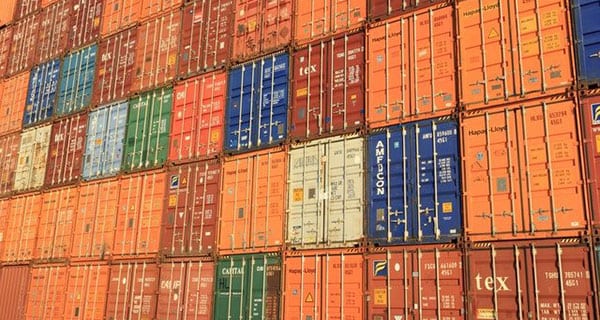Canada’s merchandise trade deficit with the world has narrowed slightly going from $3.1 billion in January to $2.9 billion in February, according to Statistics Canada.
The federal agency reported on Wednesday that following two consecutive monthly increases, total imports declined 1.6 per cent to $50.9 billion in February. Imports were down in eight of 11 product sections, with metal and non-metallic mineral products posting the largest decline. Import prices were down 1.6 per cent, while volumes were essentially unchanged.
“Following a 5.3 per cent increase in January, total exports were down 1.3 per cent in February to $48.0 billion. All non-energy product sections declined in February, led by the metal and non-metallic mineral products section. Excluding energy products, exports fell 4.0 per cent. Overall, export volumes were down 4.1 per cent, while prices were up 2.9 per cent,” said StatsCan.
“Exports of energy products partially offset the overall decrease in February, up 11.7 per cent to $9.3 billion. Following five months of decline, exports of crude oil (+8.5 per cent) rose for a second consecutive month in February, again on the strength of higher prices. Meanwhile, export volumes for crude oil were down 5.3 per cent, which coincided with production cuts in Alberta at the beginning of the year. Exports of natural gas (+46.2 per cent.) also contributed to the increase in February, mostly on higher prices.”
Rannella Billy-Ochieng, an economist with RBC Economics, said that on a year-over-year basis, non-energy exports volumes are flat.
“We continue to expect that Q2 will provide a modest rebound given that U.S. industrial sector still looks healthy. Aside from this we also expect energy exports to recover in Q2 as mandatory production cuts end. Overall, (Wednesday’s) report provides yet another reason for the Bank of Canada to remain on the sidelines until we see evidence of strength.”
Omar Abdelrahman, an economist with TD Economics, called it an “unambiguously disappointing report.”
“Looking beneath the appealing headline numbers, the significant weakness in export volumes and its broad-based nature (with all major categories dropping) will weigh on economic activity. The import picture was not quite as weak, holding most of January’s gains in place,” he said.
“The release is negative for our GDP tracking, leaving it near zero per cent for Q1. For the broader economy, a range of other releases this week confirm that Canada continued to struggle to find its economic footing at the start of 2019, joining a weak manufacturing sales print and a soft Bank of Canada Business Outlook Survey.”
– Mario Toneguzzi
The views, opinions and positions expressed by columnists and contributors are the author’s alone. They do not inherently or expressly reflect the views, opinions and/or positions of our publication.



